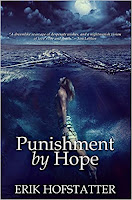The plot of The Lighthouse is pretty easy to
explain: In the 1890’s two men (played by Robert Pattinson and Willem
Dafoe) try to maintain their sanity
while working at a lighthouse on a remote New England island. They
spectacularly fail to hold onto sanity. But there’s also a lot going on within
the movie itself that goes beyond both men doing their best impression of Jack
Nicholson as Jack Torrance. Viewers are given an intimate view of the two men
gradually getting on each other’s nerves until those taut nerves snap. Willem
Dafoe’s Thomas Wake is a stern taskmaster, constantly giving Pattinson’s
Ephraim Winslow a variety of taxing chores while banning him from the
lighthouse’s light. Ephraim Winslow, a less-than-model employee, begins to see
strange things from sea monsters to mermaids to the man who had his old job.
This eventually leads to a violent confrontation between the two men and their
mutual ruin. Rife with symbolism and playing on many established myths and
tropes, from the siren leading seafaring men to their deaths to the story of
Prometheus, The Lighthouse is a
hallucinogenic journey down the dark and briney rabbit hole, a mythic tragedy
underscoring the dangers of tempting fate, the sea, or whatever lives at the
top of the lighthouse.
While The
Lighthouse is grounded in the reality of the sea around New England in the
1890’s, Hofstatter’s Punishment by Hope
takes place on the sea in an entirely different plane of existence. Nim spends
his time longing for a mysterious woman who constantly refuses his advances. No
matter how many times he swims to her, no matter what kinds of burdens he
carries for her, she rejects him despite her becoming the center of his
universe. If Hofstatter’s story plays on the siren myth, it flips the script by
having the object of desire actively reject that role. What is assured is the
sense of overwhelming tragedy that gradually pulls Nim into a deal that might
be called a Faustian deal if it were on dry land, but may make readers, perhaps
unfairly, think of Hans Christian Anderson’s The Little Mermaid (not so much the Disney version). To reveal too
much about the story takes away from its power, but it also might not even be
the point. Hofstatter excels not in creating a tight narrative but in creating
a surreal fever dream that reads like epic poetry, carrying readers along on
waves of gorgeous metaphors to this tale’s conclusion. Like The Lighthouse and Laird Hunt’s In the House in the Dark of the Woods, Punishment by Hope is less like reading
a story and more like drowning in the imagery of a painting that draws the eye
and sucks you in. Both film and book are works of art where viewers and readers
can get lost in the various swirls of black, white, blue, and red that are both
artists’ individual palettes.

No comments:
Post a Comment